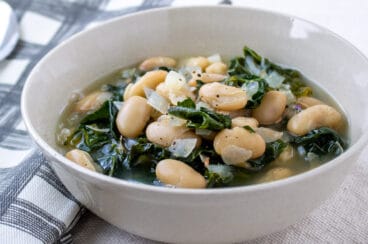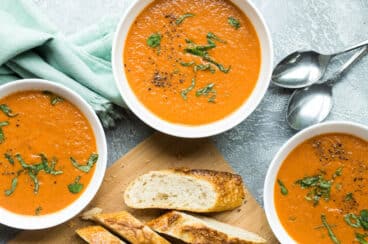This post may contain affiliate links. For more information, please see our affiliate policy.
Learn How to Make Vegetable Broth to elevate all your soups, stews, and plant-based entrees. After just 15 minutes of prep time, this easy Vegetable Broth recipe practically cooks itself!
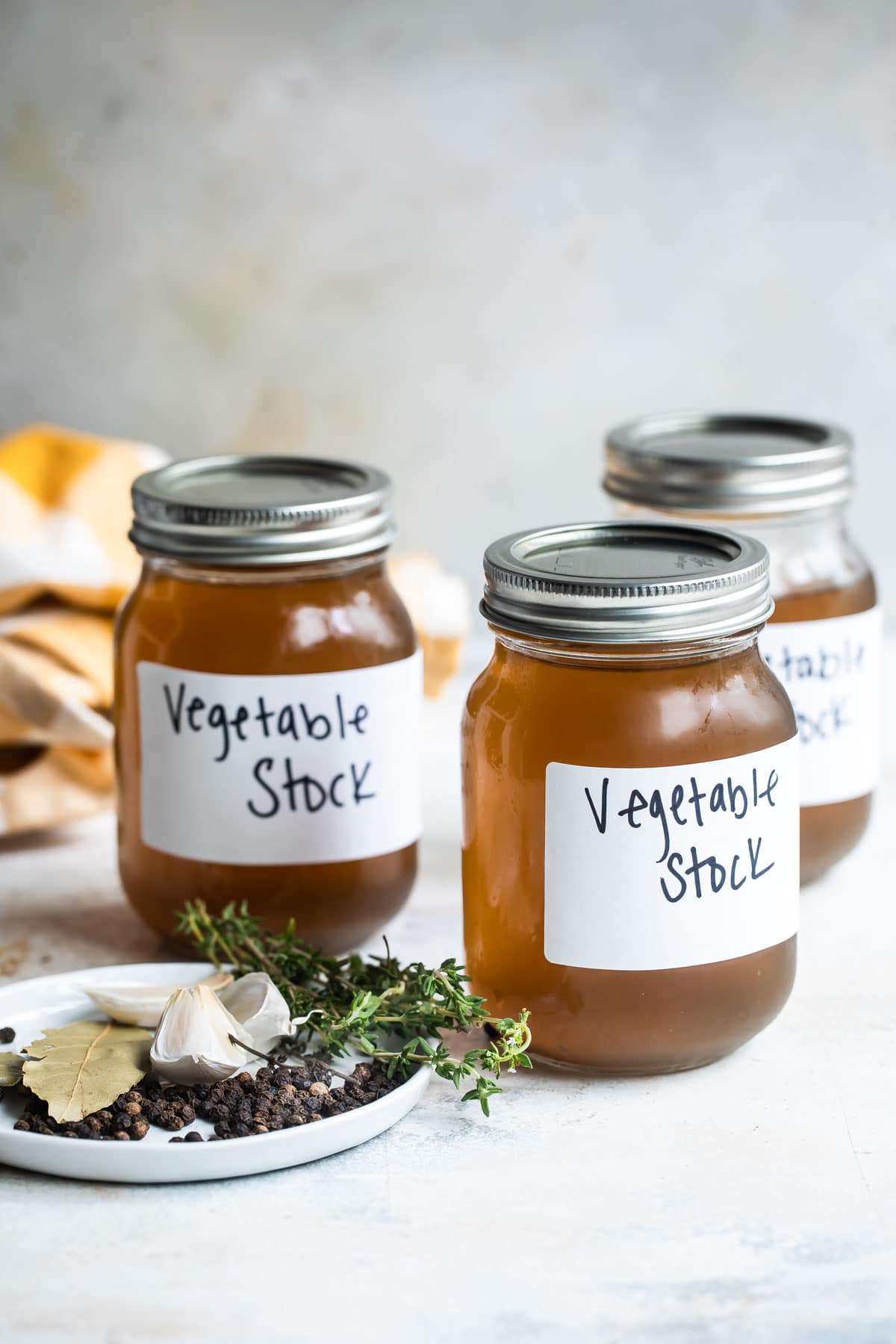
Making vegetable broth is easy and satisfying. Humble root vegetables, mushrooms, and a seemingly random array of spice cabinet staples join forces to great magic in this easy homemade Vegetable Broth recipe.
True, you can buy vegetable broth by the can or carton at the store, but there’s something pretty magical about the flavor that results from fresh vegetables, cooked from scratch right in your own kitchen. Plus, you can control how much or little salt you add and get to benefit from the amazing aromas as this easy Vegetable Broth recipe simmers away on your stovetop!
Table of Contents
Recipe ingredients
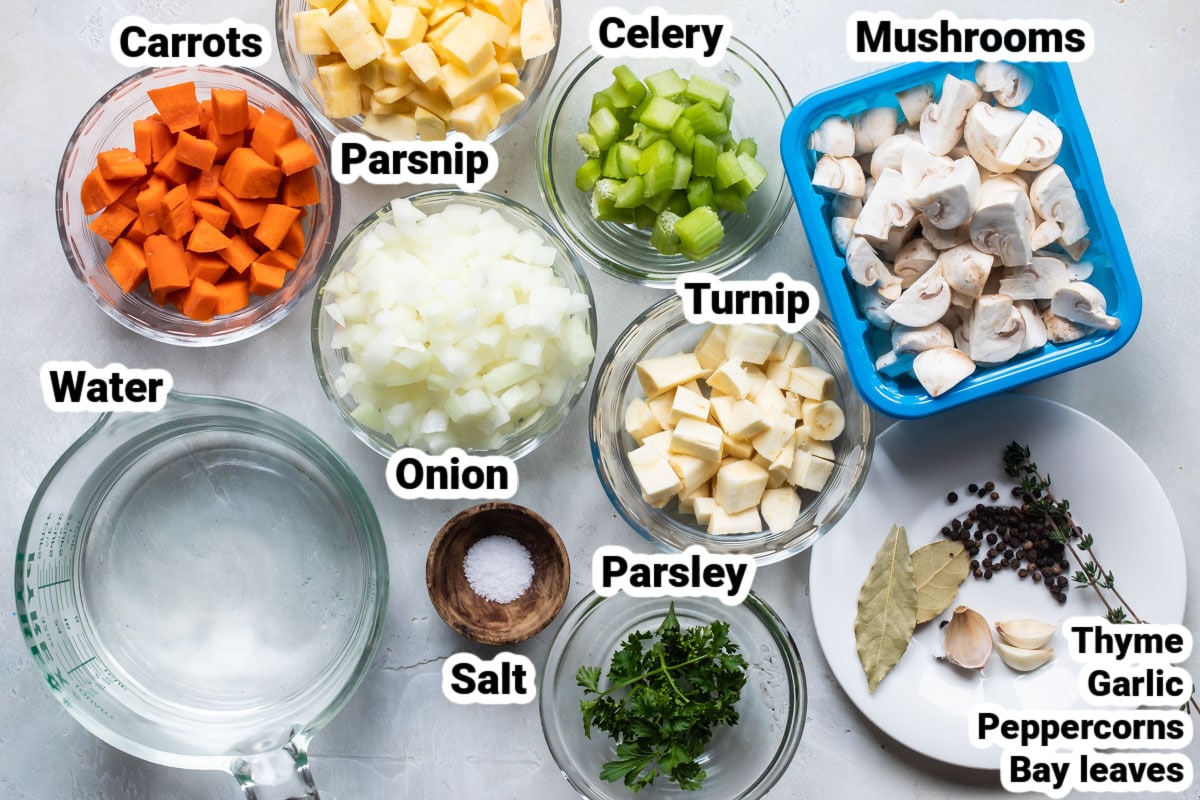
At a Glance: Here is a quick snapshot of what ingredients are in this recipe.
Please see the recipe card below for specific quantities.
Ingredient notes
- Vegetables: Some cooks save old vegetable trimmings to add to their broth. I prefer to start with new, fresh vegetables because I think the broth will taste better. So yes, we peel the carrots, and save your vegetable scraps for composting!
- Herbs and spices: A sachet is a fancy term for parsley stems, thyme, bay leaves, peppercorns, and optionally, garlic cloves, tied up in a piece of cheesecloth with twine. A tea ball or a loose leaf tea bag can also do the job nicely. Using some sort of packet makes it easier to pull these small ingredients out of the broth later. Alternatively, you can simply add everything straight to the pot since you strain the broth at the end anyway.
- Cold water: Key word: “cold.” This helps keep the broth clear, not cloudy. The amount of water used and the length of simmering time helps determine the intensity of the final product.
Step-by-step instructions
- In a large Dutch oven or large stock pot over high heat, add onion, carrots, celery, parsnips, turnip, mushrooms, salt, and 4 cups cold water and bring to a boil. If desired, tie parsley stems, thyme, garlic, bay leaves, and peppercorns to make a sachet or add loosely to the pot.
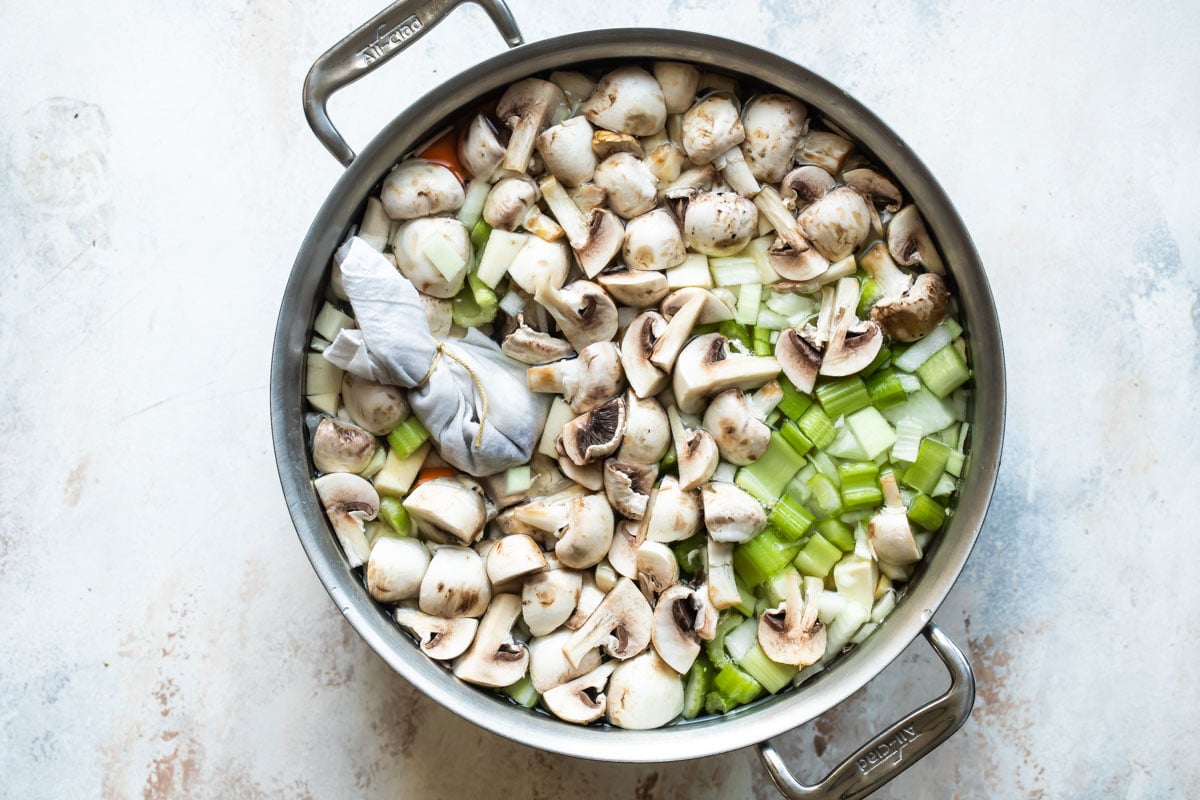
- Reduce heat to medium and simmer 2 hours.
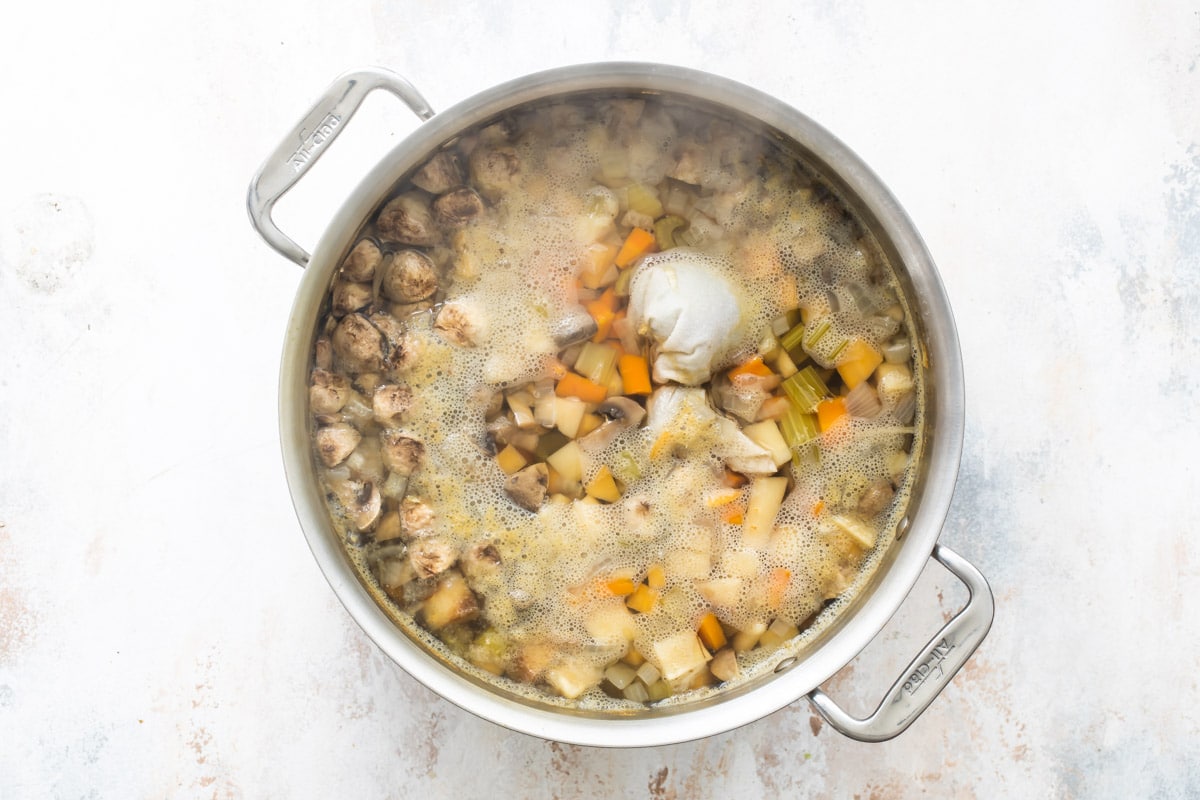
- Return to a boil over medium-high heat, skim foam off the top, then reduce heat to low.
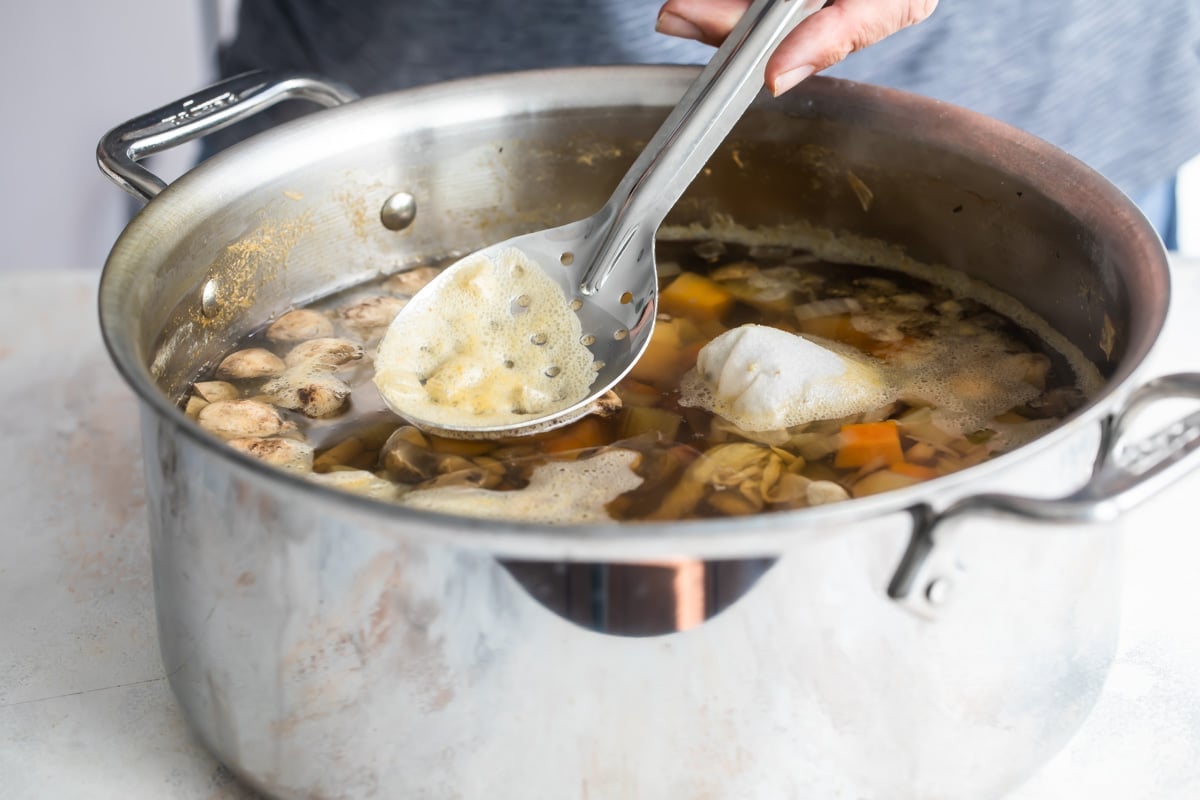
- Add remaining 2 cups water and continue reducing over medium heat for 1 hour longer.
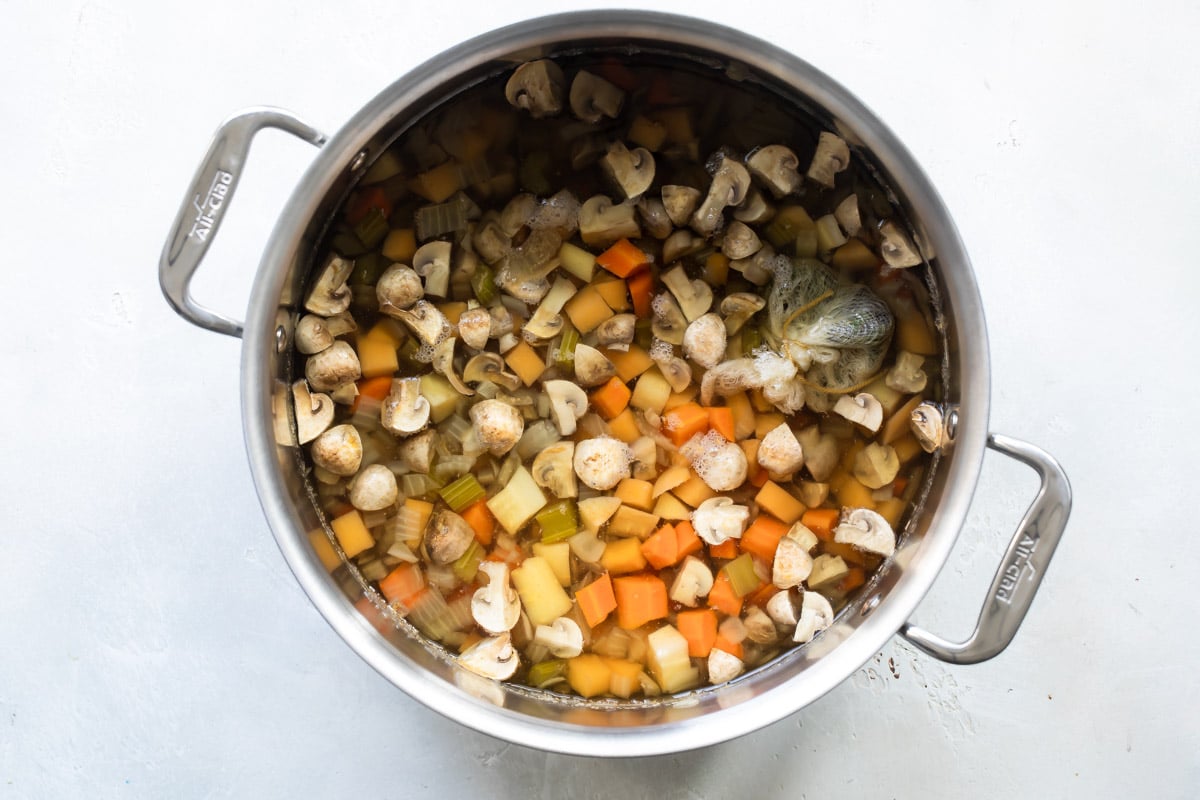
- Strain the stock through a fine-mesh strainer or cheesecloth, pressing down on the solids to remove as much liquid as possible. Season to taste with sea salt. Place in a large bowl and chill covered overnight in the refrigerator.

- Divide the broth into freezer-safe containers (leaving at least 1/2-inch for expansion), label, and freeze. Or, refrigerate and use within 4 days.
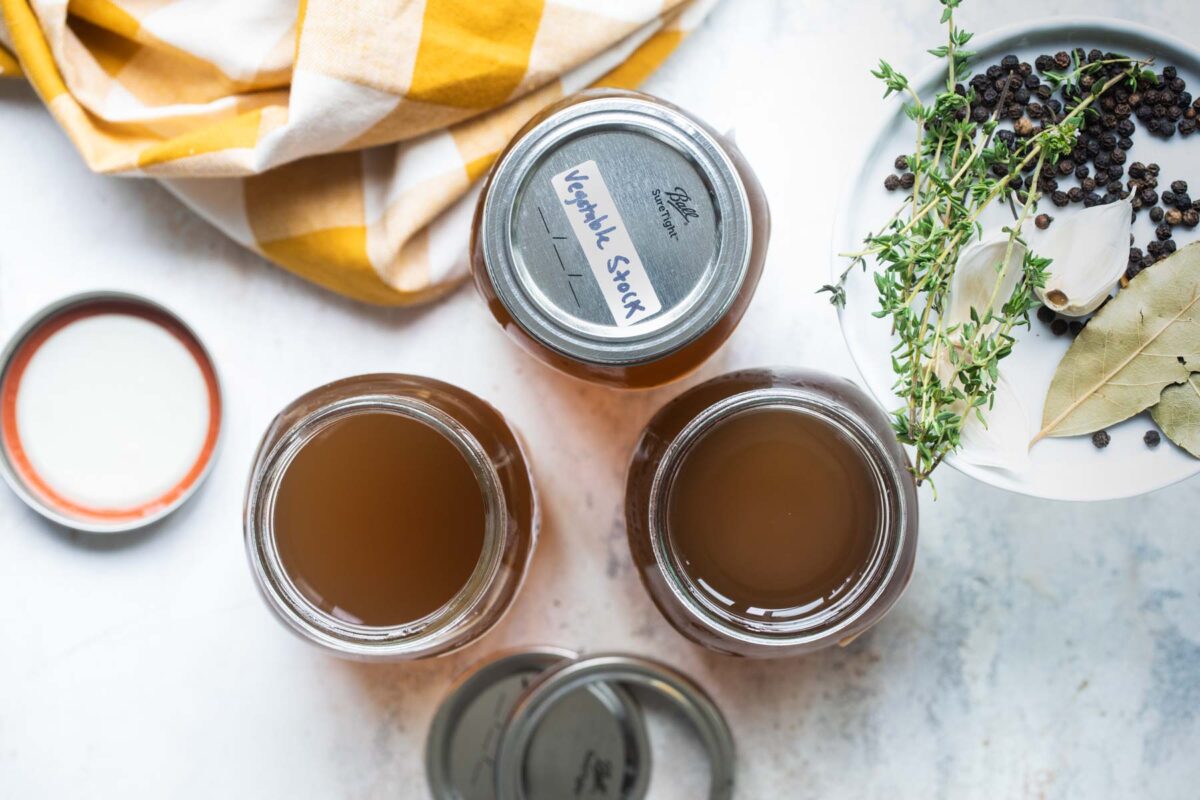
Recipe tips and variations
- Yield: This Vegetable Broth recipe makes eight 1-cup servings (64 ounces), the equivalent of two of those large cartons of stock or a little more than four 14 1/2-ounce cans of broth.
- Storage: Pack this homemade vegetable broth into storage containers and refrigerate for up to 4 days.
- Freezing: Divide the broth into freezer-safe containers (I like to use 16-ounce glass jars) and leave 1/2-inch head space for expansion. You can also use ice cube trays for smaller portions. Simply freeze the broth in the trays, and once they are frozen, remove them from the tray and store them together in a freezer bag. Label and date, then freeze for up to 3 months. Thaw overnight in the refrigerator.
- Dried mushrooms: For a pantry-umami flavor boost, rehydrate dried mushrooms and add them to your vegetable broth in addition to, or instead of, the fresh mushrooms.
- Vegetable scraps: I prefer to use fresh vegetables for the most flavorful, clean broth taste. But, for scrappy cooks looking to reduce food waste, you can certainly add your unwanted veggie scraps like mushroom stems, onion skins, carrot peels, and the tiny inner celery stalks.
- Avoid strong flavors: The best veggie broth is a blend of mild flavors that complement each other. To that end, avoid overpowering vegetables such as cauliflower, beets, bell peppers, corn cobs, and green beans when making homemade vegetable broth.
- The simplest soup: For the simplest vegetable soup, simmer homemade vegetable broth on the stove with your favorite vegetables. Add a scoop of cooked rice, cooked quinoa, or cooked lentils to the bowl or serve with crusty bread and olive oil for dipping.
- Put the broth to stellar use: Vegetable broth is one of my go-to ingredients for so much more than soup. Try incorporating it into Potato Leek Soup, Wild Mushroom Risotto, Pesto Cavatappi, or Pasta Primavera. Or, of course, your favorite soup or stew recipe (Minestrone pictured below).
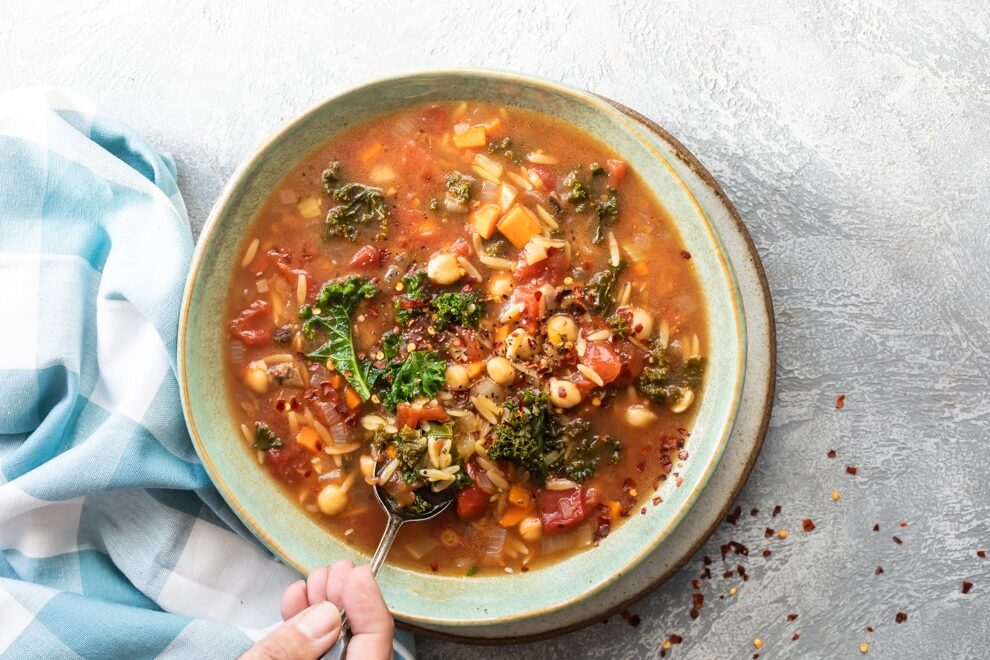
Frequently Asked Questions
Many cooks save their scraps in a large zip-top bag in the freezer to preserve them for making vegetable broth at a later date once they have enough. I prefer the flavor with fresh vegetables but feel free to try this recipe with both to determine your favorite method.
All sorts of ingredients can be transformed into either stock or broth to use as a base for soups and other recipes. Discover How to Make Chicken Broth, How to Make Turkey Broth, and How to Make Shrimp Stock.
Yes, this vegetable broth recipe is plant-based and 100% vegan.
These terms are often used interchangeably, but technically, stock is made with just bones (in the case of chicken or turkey, for example), shells (such as shrimp, lobster, or crab), or vegetables, while broth is made with both the bones and the meat. When it comes to plant-based broths and stocks, the terms are used interchangeably since there is neither meat nor bones.
More cozy soup recipes
Soup and Stew Recipes
White Bean and Kale Soup
Soup and Stew Recipes
Cabbage Soup
Soup and Stew Recipes
Roasted Tomato Soup
Soup and Stew Recipes
Cream of Broccoli Soup
Join Us
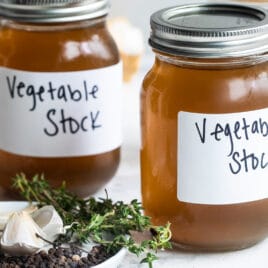
How to Make Vegetable Broth
Ingredients
- 1 large onion coarsely chopped (see note 1)
- 1 large carrot or 2 medium carrots, peeled and coarsely chopped
- 2 celery ribs coarsely chopped
- 1 large parsnip peeled and coarsely chopped
- 1 medium turnip peeled and coarsely chopped
- 8 ounces mushrooms quartered
- 6 cups water cold, divided (see note 2)
- 1 tablespoon salt
For the sachet (see note 3):
- 1 bunch fresh parsley stems
- 2 sprigs fresh thyme
- 3 cloves garlic
- 2 bay leaves
- 1 tablespoon whole black peppercorns
Instructions
- In a large Dutch oven or stock pot over high heat, add onion, carrots, celery, parsnips, turnip, mushrooms, salt, and 4 cups cold water and bring to a boil. If desired, tie parsley stems, thyme, garlic, bay leaves, and peppercorns to make a sachet or add loosely to the pot.
- Reduce heat to medium and simmer 2 hours. Return to a boil over medium-high heat, skim foam off the top, then reduce heat to low. Add remaining 2 cups water and continue reducing over medium heat for 1 hour longer.
- Strain the stock through a fine-mesh strainer or cheesecloth, pressing down on the solids to remove as much liquid as possible. Season to taste with salt. Place in a large bowl and chill covered overnight in the refrigerator.
- Divide the broth into freezer-safe containers (leaving at least 1/2-inch for expansion), label, and freeze. Or, refrigerate and use within 4 days.
Notes
- Vegetables: Some cooks save old vegetable trimmings to add to their broth. I prefer to start with new, fresh vegetables because I think the broth will taste better. So yes, we peel the carrots, and save your vegetable scraps for composting!
- Cold water: Key word: “cold.” This helps keep the broth clear, not cloudy. The amount of water used and the length of simmering time helps determine the intensity of the final product.
- Herbs and spices: A sachet is a fancy term for parsley stems, thyme, bay leaves, peppercorns, and optionally, garlic or cloves, tied up in a piece of cheesecloth with twine. A tea ball or a loose leaf tea bag can also do the job nicely. Using some sort of packet makes it easier to pull these small ingredients out of the broth later. Alternatively, you can simply add everything straight to the pot since you strain the broth at the end anyway.
- Yield: This Vegetable Stock recipe makes eight 1-cup servings (64 ounces), the equivalent of two of those large cartons of stock or a little more than four 14 1/2-ounce cans of stock.
- Storage: Store this Homemade Vegetable Stock recipe in the refrigerator and use within 4 days.
Nutrition
Meggan Hill is a classically-trained chef and professional writer. Her meticulously-tested recipes and detailed tutorials bring confidence and success to home cooks everywhere. Meggan has been featured on NPR, HuffPost, FoxNews, LA Times, and more.
